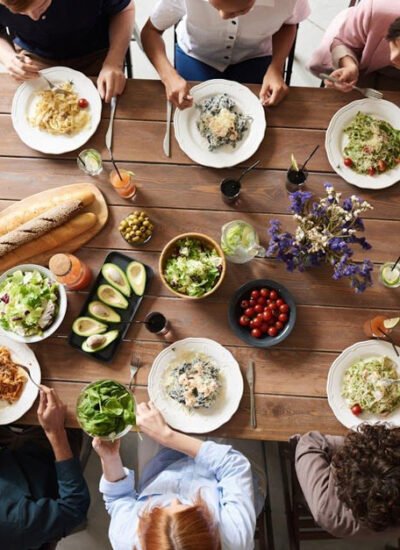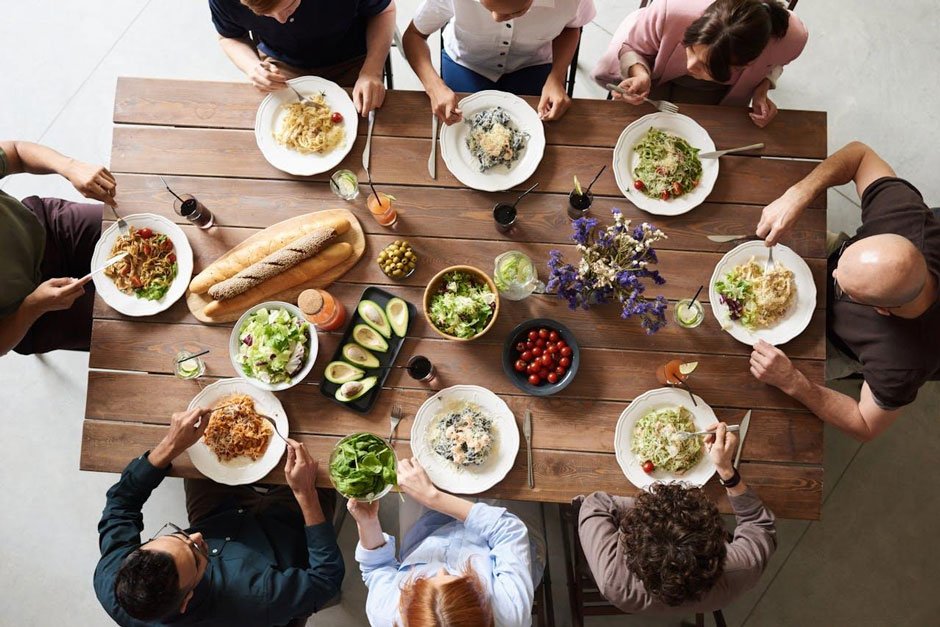Have you ever noticed how food has a magical way of bringing people together? Whether it’s a family dinner, a holiday feast, or a casual potluck with friends, sharing a meal is one of the simplest ways to connect. Food doesn’t just fill our stomachs—it warms our hearts and creates memories that last a lifetime.
In today’s fast-paced world, where schedules are packed, and digital distractions are everywhere, sitting down to eat together feels more meaningful than ever. It’s not just about the food; it’s about the laughter, the stories, and the little moments of togetherness that happen around the table. From Sunday roasts to taco nights, every meal has the power to turn strangers into friends and families into closer-knit units.
This idea isn’t new. Across cultures and generations, food has been at the center of gatherings, celebrations, and even negotiations. But in modern times, as societal trends shift toward convenience and efficiency, cooking and eating together have become intentional acts of love and connection. In this blog, we will share how flavors have the power to unite people and offer ideas for creating those moments in your own life.
Flavors That Spark Joy: Recipes to Share
One of the best ways to bring people together is through food that sparks joy. There’s a special kind of magic in a dish that not only tastes delicious but also invites conversation, laughter, and a sense of togetherness. While Mexican cuisine often stands out for its bold and vibrant flavors, there are countless other dishes from around the world that carry the same connective power.
Mexican Cuisine: Comfort in Every Bite
Take Mexican food, for example. If you’re looking for a dish that’s both comforting and crowd-pleasing, consider trying a tasty and simple beef enchilada recipe. This classic meal is packed with rich, savory flavors that appeal to almost everyone. Layers of tender beef, gooey cheese, and a flavorful enchilada sauce come together to create a dish that’s satisfying and versatile. Plus, preparing enchiladas can be a collaborative effort, with everyone pitching in—making it as much about the process as the meal itself.
Italian Favorites for the Family Table
Italian cuisine also brings joy to the table. A steaming tray of lasagna, layered with rich tomato sauce, creamy béchamel, and gooey mozzarella, is the epitome of comfort food. Much like enchiladas, lasagna can be a collaborative cooking experience, with each person taking charge of a different layer. Served family-style, it encourages everyone to dig in, share stories, and maybe fight over the crispy edges.
The Interactive Charm of Asian Cuisine
Asian cuisine shines when it comes to interactive dining experiences. Think about a platter of dumplings—perfect little parcels of flavor that are as fun to make as they are to eat. Families or friends can gather to fold dumplings together, swapping tips on how to seal the edges or debating the best dipping sauce. The repetitive rhythm of folding and chatting creates a soothing, meditative atmosphere, while the final dish is a communal feast meant to be shared.
The Outdoor Allure of Grilling
Grilling is another way to bring people together. Whether it’s juicy burgers, smoky ribs, or char-grilled veggies, cooking outdoors fosters a sense of camaraderie. People gather around the grill, sharing laughs and stories, while the irresistible aroma of sizzling food fills the air. It’s not just about eating; it’s about the rituals—the flipping, basting, and the joy of waiting together for the perfect sear.
Build-Your-Own Meals: Customization Meets Connection
Even something as simple as a build-your-own meal setup can be a game-changer for gatherings. Think taco bars, DIY pizza stations, or customizable bowls. Not only do these setups allow everyone to tailor their meal to their preferences, but they also spark creativity and conversation. Guests linger at the table, exchanging ideas for combinations and comparing their creations, making the dining experience interactive and fun.
Desserts: The Sweet End to Togetherness
Desserts, too, have their role in creating shared moments. A warm apple pie, fresh out of the oven, or a batch of gooey brownies cooling on the counter invites everyone to gather around. And let’s not forget the timeless charm of making s’mores around a fire pit. The process of toasting marshmallows, balancing chocolate, and squishing it all between graham crackers is as much about the experience as the taste.
Food as a Reflection of Community and Culture
Food isn’t just about flavor—it’s about storytelling. Every dish carries a bit of history, culture, and tradition. When you share a meal with others, you’re not just feeding them; you’re inviting them into your world.
Cultural Traditions That Unite
For example, think of Thanksgiving in the U.S. It’s not just about turkey and stuffing; it’s about the traditions that families build around the table. Similarly, in many Asian cultures, meals are served family-style, with everyone sharing from the same dishes. This communal approach to eating emphasizes togetherness and equality.
Preserving Traditions in a Modern World
In recent years, there’s been a renewed interest in preserving food traditions while also experimenting with new ones. Social media has played a big role in this. Platforms like Instagram and TikTok have become virtual cookbooks, with people sharing family recipes and putting modern twists on classic dishes. It’s a way of connecting with the past while creating something new for the future.
Food, Sustainability, and Local Connections
At the same time, there’s a growing appreciation for the role food plays in sustainability. Many people are choosing to support local farmers, reduce food waste, and cook with seasonal ingredients. This shift isn’t just good for the planet—it also creates a stronger sense of community as people come together to support local food systems.
Creating Memories, One Meal at a Time
The beauty of these dishes isn’t just their flavors; it’s the stories they create. They remind us that food isn’t just about sustenance—it’s about connection. Whether you’re crafting dumplings, grilling burgers, or assembling tacos, the act of cooking and eating together fosters joy and builds memories that last far beyond the meal itself.
In a world that often feels rushed and fragmented, taking the time to gather around a table feels more important than ever. So, the next time you prepare a meal, think of it as more than just cooking. It’s an opportunity to create memories, spark conversations, and bring a little more joy into the world—one bite at a time.






Leave a Reply